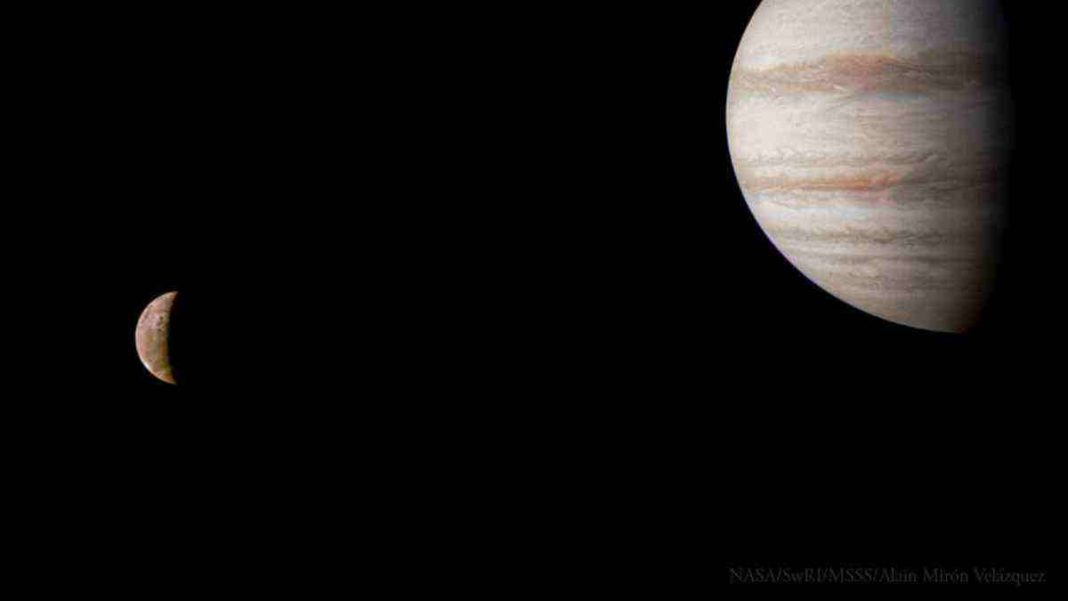UNITED STATES: Our solar system’s majestic wonders never cease to amaze, and the largest planet, Jupiter, remains a celestial marvel that continues to captivate space enthusiasts worldwide. On July 30, 2023, NASA’s Juno mission provided a breathtaking glimpse of Jupiter and its volcanic moon, Io, in a stunning display of cosmic beauty.
This extraordinary image, captured just hours before Juno’s 53rd close flyby of the gas giant, has left astronomers and the public alike in awe.
Citizen scientist Alain Miron Velazquez, leveraging the raw data from JunoCam, meticulously crafted this mesmerizing portrait. His expertise shone as he enhanced the contrast, color, and sharpness of the photograph, revealing the dynamic and ethereal nature of this celestial duo.
At the moment of the snapshot, Juno was positioned approximately 32,170 miles from Io and about 245,000 miles above the tumultuous cloud tops of Jupiter.
The grandeur of Jupiter
NASA describes Jupiter as the colossus of our solar system, residing as the fifth planet from the Sun. Its size is awe-inspiring, with a mass more than twice that of all other planets combined. The iconic stripes and swirls gracing Jupiter’s atmosphere are a dance of cold, windy clouds composed of ammonia and water, suspended within an envelope of hydrogen and helium. While Jupiter boasts dozens of moons and faint, dusty rings, it stands in a league of its own, separate from its ringed sibling, Saturn.
Io: A volcanic wonderland
Jupiter’s vast retinue of moons, numbering over 80, includes four significant ones: Io, Europa, Ganymede, and Callisto. These celestial jewels were first spotted by the pioneering astronomer Galileo Galilei in 1610, who relied on an early version of the telescope to witness their splendor.
Among these moons, Io stands as a remarkable outlier, boasting the most volcanically active surface in the entire solar system.
Io’s landscape is a testament to its fiery nature, characterized by the presence of hundreds of regularly erupting volcanoes, molten lava flows, and sulfurous gases. Over the years, NASA’s Juno mission, initiated in 2007, has provided close-up examinations of this enigmatic moon, furthering our understanding of its volatile and tumultuous existence.
We anticipate an exciting influx of data and images from Jupiter as NASA’s Juno mission continues its exploration. In late 2023 and early 2024, the mission is poised to deliver even more captivating insights into Jupiter’s mysteries, quenching our thirst for knowledge about this gas giant and its enthralling companions.
So, as we marvel at this recent image of Jupiter and Io, we are reminded of the boundless wonders that our solar system holds, encouraging us to look to the skies with wonder and anticipation for what lies beyond.



